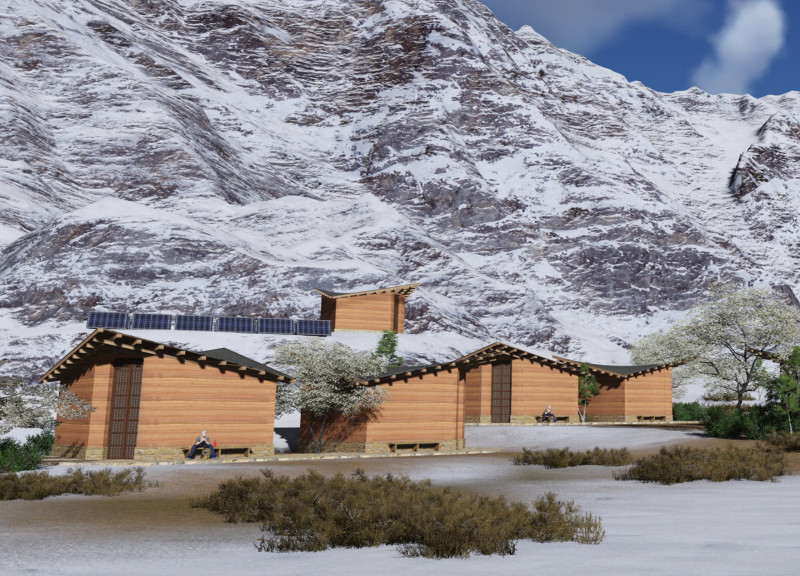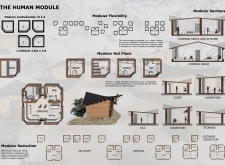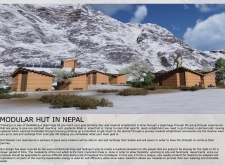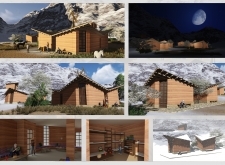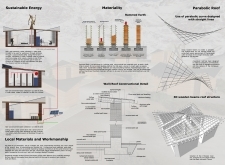5 key facts about this project
### Overview
Located in the mountainous regions of Nepal, the Modular Hut project addresses the accommodation needs of trekkers along significant pilgrimage trails in the Himalayas. This design marries contemporary architectural principles with traditional materials and local craftsmanship, focusing on sustainability, flexibility, and the creation of community-oriented spaces.
### Modular Design and Spatial Strategy
The project employs a modular design concept, utilizing 4.8m x 4.8m units that can be adapted into various configurations to suit site-specific requirements and user preferences. This flexibility allows for the integration of common areas, dormitories, and utility facilities, such as kitchens and bathrooms, tailored to diverse occupancy scenarios—ranging from minimal staffing to full service. Central communal areas foster interaction among visitors, while private dormitories are designed for comfort and rest, ensuring a functional response to user needs.
### Material Selection and Sustainability
Materials are carefully chosen to reflect local resources and enhance environmental sustainability. Rammed earth provides excellent thermal mass, while locally sourced wood is used for structural components, supporting the local economy and minimizing transportation-related carbon emissions. The use of durable aluminum for roofing and high-efficiency insulating glass for windows enhances longevity and energy performance. Renewable energy systems, including rainwater harvesting and solar panels, contribute to the huts' self-sufficiency, aligning with modern eco-architectural practices and addressing the ecological challenges of the region.
### Technological Integration
Incorporating advanced technologies, the design features a parabolic roof structure that optimizes rainwater management and energy efficiency while harmonizing with the local terrain. Additionally, thick earthen walls facilitate effective thermal control, making the huts responsive to the climatic conditions typical of the mountainous environment. The modular approach and the use of local materials effectively tackle challenges related to accessibility and material transport, showcasing the adaptability of the design to its geographical and logistical context.


